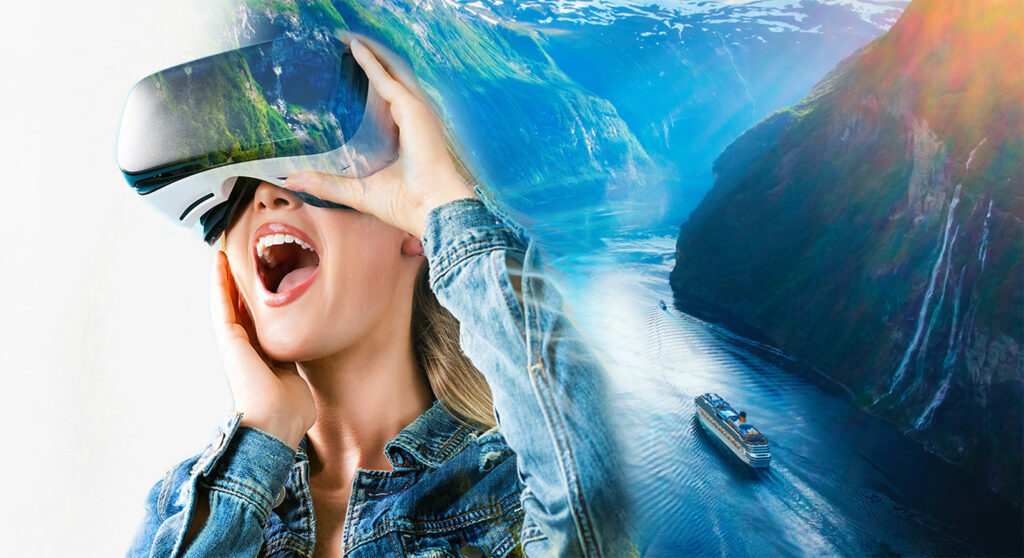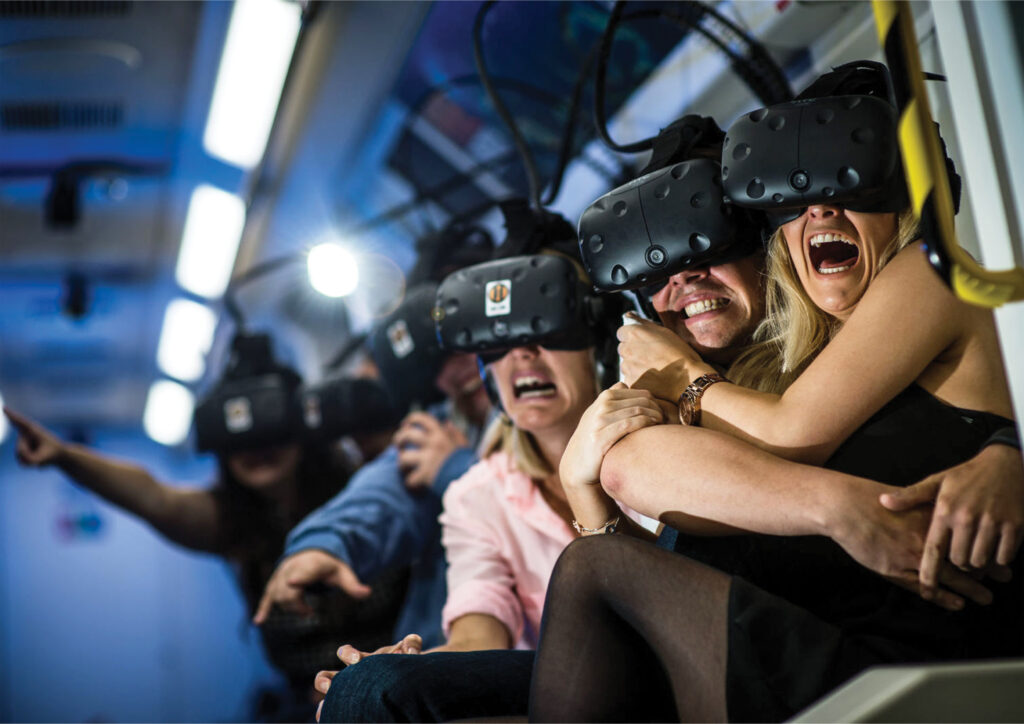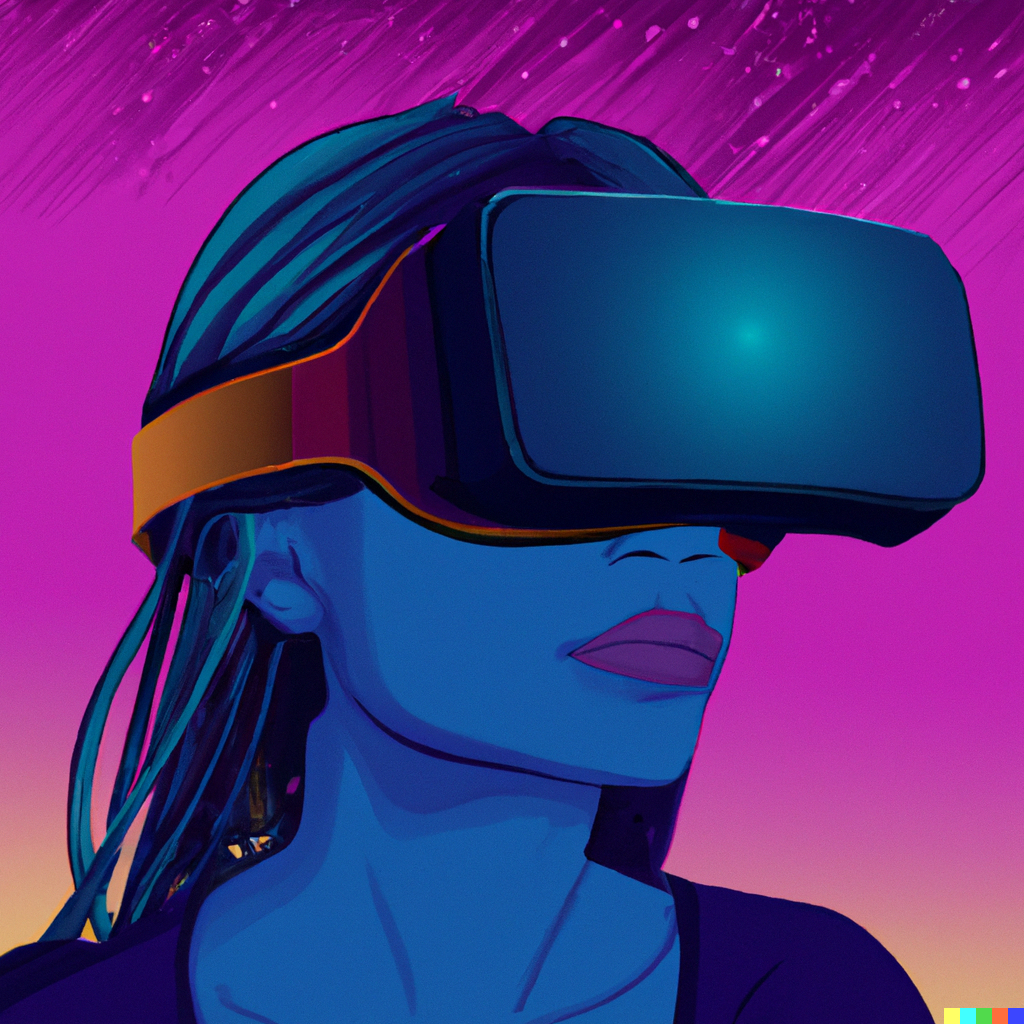Virtual reality is unlikely to fully replace traditional travel, as both forms of exploration offer unique benefits and experiences. Instead, VR and traditional travel will likely coexist, complementing each other and providing travelers with a diverse range of options to suit their preferences and needs.
As someone who loves exploring new places, I couldn’t help but wonder: Will virtual reality replace travel? It’s a question that’s been on my mind for a while now, and I’m sure I’m not alone in pondering this. Technology has come a long way, and with the rapid advancements in virtual reality (VR), it’s only natural to question how it will impact the future of tourism.
In this article, we’re going to delve into this fascinating topic, weighing the pros and cons and discussing what’s in store for both the travel industry and our own wanderlust-filled adventures. I want to take you on a journey with me, as we explore what virtual reality has to offer and whether it could truly replace the real-life experiences we crave. So, grab your (virtual) passport, and let’s embark on this exciting quest together!
The Rise of Virtual Reality in Tourism: An Overview

In recent years, virtual reality has made significant strides, becoming more accessible and advanced than ever before. As a result, the tourism industry has seen a growing interest in incorporating VR experiences into its offerings. From virtual tours of famous landmarks to immersive cultural experiences, there’s no denying that VR is starting to reshape the way we think about travel.
A key factor in the rise of virtual reality in tourism is the continual improvement of VR technology. Headsets are becoming more comfortable, visuals more realistic, and the overall experience more immersive. These enhancements have made it possible for developers to create incredibly lifelike simulations, allowing users to “visit” destinations they may have only dreamed of exploring.
Another driving force behind this trend is the increasing availability of VR devices. With more affordable options hitting the market, it’s no longer just a luxury for tech enthusiasts. Now, people from all walks of life can experience the thrill of virtual travel, opening up a world of possibilities for the tourism industry.
While the idea of virtual travel may have once been considered a gimmick, the growing demand for these experiences and their potential benefits have piqued the interest of travel professionals. Major players in the industry have begun investing in and developing VR-based attractions, further cementing the technology’s place in the future of tourism.
But as exciting as these advancements are, we have to ask ourselves: Can virtual reality truly replace the authentic, real-life experiences that come with traditional travel?
In the next section, we’ll discuss the benefits of traveling from home using VR, such as cost savings and increased accessibility for people who might not have the means or ability to explore the world otherwise. But we’ll also tackle the limitations of virtual reality and what aspects of travel it simply can’t replicate.
Traveling from Home: The Pros of VR-based Adventures

As virtual reality continues to gain traction in the tourism industry, it’s essential to consider the advantages it brings to the table. Let’s take a look at some of the pros of VR-based adventures that make them an appealing alternative to traditional travel:
- Cost Savings: One of the most significant benefits of virtual travel is the reduced cost. For many people, the expense of traveling to far-off destinations can be a significant barrier. VR experiences, on the other hand, offer an affordable way to “visit” new places without breaking the bank. By eliminating airfare, accommodations, and other travel expenses, VR can make exploring the world more accessible to a wider audience.
- Convenience and Flexibility: Virtual reality allows you to travel from the comfort of your own home, at any time, and at your own pace. There’s no need to worry about coordinating schedules, booking flights, or packing suitcases. With VR, you can embark on a new adventure whenever the mood strikes, making it a convenient option for those with busy lifestyles or limited vacation time.
- Accessibility: VR-based adventures can open up travel experiences for individuals who may face challenges with traditional travel, such as people with disabilities, the elderly, or those with health issues. By removing physical barriers and limitations, virtual reality can offer a more inclusive way to explore the world for people who may have previously felt excluded from certain experiences.
- Safety: Traveling to unfamiliar places can come with its share of risks, from health concerns to navigating unfamiliar environments. Virtual reality eliminates these potential dangers, providing a safe way to experience new destinations without the associated risks. This can be particularly appealing for solo travelers or those who might feel apprehensive about venturing to certain locations.
- Education and Cultural Immersion: VR-based adventures offer unique opportunities for learning and cultural immersion. With the ability to virtually visit museums, historical sites, and cultural landmarks, users can gain a deeper understanding of the world and its diverse cultures. Developers can also incorporate interactive elements and educational resources, turning virtual experiences into engaging and informative journeys.
While these pros paint an enticing picture of VR-based adventures, it’s important to acknowledge that virtual travel also has its limitations. In the next section, we’ll delve into the aspects of travel that virtual reality may struggle to replicate, helping us understand the potential gaps in the VR tourism experience.
Limitations of Virtual Reality: What’s Missing in Digital Exploration

As promising as virtual reality in tourism may seem, it’s crucial to recognize that there are certain aspects of travel that VR simply cannot replicate. Here are some limitations of digital exploration that remind us of the unique value of traditional, real-world experiences:
- Tangible Experiences: One of the most significant drawbacks of virtual reality is the lack of physicality. VR can create visual and auditory simulations, but it can’t reproduce the feeling of the sun on your skin, the scent of a bustling marketplace, or the taste of a local delicacy. These sensory experiences are a vital part of what makes travel so enriching, and they remain exclusive to real-world adventures.
- Human Connection: While VR can simulate social interactions to some extent, it can’t replace the genuine connections formed with locals or fellow travelers during a trip. The shared experiences, conversations, and spontaneous encounters that occur while traveling can create lifelong memories and friendships that are difficult to replicate in a virtual environment.
- Serendipity and Unpredictability: One of the most exciting aspects of travel is its inherent unpredictability. Unexpected detours, chance encounters, and spontaneous discoveries can often lead to the most memorable experiences. In contrast, virtual reality experiences are often carefully curated and scripted, lacking the element of surprise that can make real-life travel so exhilarating.
- Personal Growth: Travel often pushes us out of our comfort zones, challenging us to adapt, problem-solve, and grow as individuals. These opportunities for personal development can be limited in a virtual environment, where risks and challenges are minimized.
- Impact on Local Economies: Tourism can be a crucial source of income for many communities around the world. By opting for virtual experiences instead of physically visiting a destination, travelers may inadvertently contribute to a decline in local tourism revenue. This can have significant consequences for the livelihoods of people who rely on the travel industry to support their families and communities.
As we can see, while virtual reality offers some remarkable advantages and opens up new possibilities for tourism, it also falls short in certain areas that make real-life travel unique and fulfilling. The question now becomes whether these limitations are enough to prevent VR from fully replacing traditional travel experiences or if the two can coexist, complementing each other in the ever-evolving landscape of tourism. In the next sections, we’ll explore the travel industry’s response to the rise of virtual reality and discuss the potential for a harmonious coexistence between VR and traditional travel.
The Travel Industry’s Response: Adapting to the VR Revolution

As virtual reality continues to make waves in the tourism sector, the travel industry is responding to this technological disruption in various ways. From embracing technology to finding innovative ways to merge virtual and real-world experiences, industry players are adapting to the VR revolution. Here’s how they’re responding:
Embracing VR as a Marketing Tool
Many tourism boards, hotels, and tour operators have started to use virtual reality as a marketing tool, offering virtual tours and immersive experiences to showcase their destinations and services. By providing potential visitors with a taste of what they can expect, these organizations hope to entice travelers and encourage them to book a real-life trip.
Developing VR Attractions
Theme parks, museums, and other attractions are increasingly incorporating virtual reality elements into their offerings, creating hybrid experiences that blend the physical and digital worlds. These attractions can provide visitors with unique, immersive experiences that expand the boundaries of traditional tourism activities.
Offering Remote Tours
In response to the growing demand for virtual experiences, some travel companies have started to offer remote tours, where a local guide live-streams their exploration of a destination while interacting with virtual participants. This approach combines the benefits of VR with the personal touch and expertise of a local guide.
Enhancing On-site Experiences
Travel providers are also exploring ways to use virtual reality to enrich on-site experiences. For example, a museum might use VR to provide visitors with additional information about exhibits, or a historical site might use the technology to recreate scenes from the past, bringing history to life in an immersive way. By integrating VR into real-world experiences, the travel industry can offer unique and engaging activities that cater to a variety of interests.
Collaboration and Partnerships
Recognizing the potential of virtual reality in tourism, travel companies are increasingly collaborating with tech firms to develop cutting-edge VR experiences. These partnerships bring together the expertise of both industries, resulting in innovative and immersive travel products that push the boundaries of what’s possible in tourism.
As the travel industry adapts to the VR revolution, it’s clear that they’re not simply dismissing the technology as a passing fad. Instead, they’re finding ways to harness its potential and incorporate it into their offerings, enhancing the overall travel experience for their customers.
However, it’s also evident that many industry players still believe in the unique value of real-world experiences, using VR as a complementary tool rather than a complete replacement for traditional travel. This leads us to the question of whether virtual reality and traditional travel can coexist, providing travelers with a diverse range of options to suit their needs and preferences. In the next section, we’ll explore this potential balance and envision the future of tourism.
The Future of Tourism: Can Virtual Reality and Traditional Travel Coexist?

As we’ve seen, virtual reality offers some incredible benefits for travelers, while also having its limitations. With the travel industry embracing and adapting to the VR revolution, it’s time to consider the future of tourism and the potential coexistence of virtual reality and traditional travel.
Complementary Experiences
The most likely scenario is that virtual reality and traditional travel will continue to coexist as complementary experiences. Each form of exploration has its strengths and weaknesses, and many travelers will likely seek out a mix of both virtual and real-world adventures. For instance, virtual reality can act as a tool to inspire and inform travelers before a trip, while real-life experiences provide tangible, human connections that VR can’t fully replicate.
Expanding Options for Travelers
As virtual reality becomes more advanced and integrated into the tourism industry, it will likely serve as an additional option for travelers, rather than replacing traditional travel entirely. This expanded range of choices can cater to different preferences, budgets, and accessibility needs, ensuring that the world of travel remains inclusive and diverse.
Encouraging Sustainable Tourism
One potential outcome of the coexistence of VR and traditional travel could be a shift towards more sustainable tourism practices. As virtual experiences become more immersive and realistic, some travelers might opt for virtual visits to fragile ecosystems or overcrowded destinations, helping to alleviate pressure on these areas and promote responsible travel.
Fostering Innovation and Collaboration
The integration of virtual reality into the travel industry has the potential to drive innovation and foster collaboration between the tech and tourism sectors. This partnership can lead to new and exciting experiences for travelers, pushing the boundaries of what’s possible in both the virtual and physical realms.
Personalized Travel Experiences
The coexistence of virtual reality and traditional travel can give rise to more personalized experiences. Travelers could use VR to preview destinations and curate their ideal itinerary before embarking on a real-life adventure. This fusion of technology and traditional travel could empower travelers to create truly tailored experiences that cater to their specific interests and preferences.
In conclusion, the future of tourism is likely to be a blend of virtual reality and traditional travel experiences. Each approach offers unique benefits, and their coexistence can provide travelers with a diverse range of options to suit their needs and desires. As technology continues to evolve, the relationship between VR and traditional travel will undoubtedly develop further, shaping the way we explore and connect with the world around us.
Conclusion
In conclusion, the future of tourism is an exciting and dynamic landscape where virtual reality and traditional travel will likely coexist and complement each other. As VR technology continues to advance, it opens up new possibilities for immersive, accessible, and sustainable travel experiences. However, it’s essential to recognize the unique value that real-world adventures offer, including tangible experiences, human connections, and personal growth opportunities.
By embracing both the virtual and physical aspects of travel, the tourism industry can cater to a wide range of preferences and needs, creating a more inclusive and diverse travel landscape. As we navigate this brave new world of exploration, we can look forward to a future where virtual reality enhances our travel experiences, while still cherishing the irreplaceable joys of discovering new places, cultures, and connections in person. So, whether it’s through a VR headset or with a physical passport in hand, let’s continue to feed our wanderlust and embrace the incredible journeys that await us.




